Mountain biking thrives on adrenaline, but as trails get gnarlier, your hardtail might struggle. So, when is it time to switch to a full suspension bike?
1. Your Terrain Demands It
If you’re tackling rocky descents, root-covered paths, or technical drops, a full suspension bike absorbs shocks better, keeping you in control. TrifoxBike’s designs, like the Trifox Full Suspension MTB, feature optimized rear travel to smooth out rough trails, reducing fatigue and improving traction.
2. Your Riding Style Gets Aggressive
Downhill shredders, jump enthusiasts, and enduro racers benefit from dual suspension. The added stability at high speeds and landings protects your body and bike. TrifoxBike’s frames balance lightweight durability with responsive suspension, ideal for pushing limits.
3. You Ride Frequently
Regular riders logging long hours need comfort. Full suspension reduces joint strain, letting you ride longer. TrifoxBike integrates ergonomic designs without sacrificing efficiency, making their bikes a smart choice for daily adventurers.
4. Your Skills Outgrow Your Bike
Advanced riders tackling steeper lines or faster corners need bikes that match their progression. Full suspension offers confidence to tackle technical features. TrifoxBike’s models support skill growth with precision handling and adjustable setups.
5. Budget Allows for Investment
While pricier than hardtails, TrifoxBike delivers high-value builds with premium components like air shocks and durable pivots. If your riding justifies the cost, it’s a worthy upgrade.
6. You Prioritize Traction
Wet, loose, or uneven terrain demands grip. Full suspension maintains tire contact, enhancing control. Pair this with TrifoxBike’s grippy tire compatibility, and you’ve got a trail-eating machine.
7. Maintenance Doesn’t Intimidate You
Full suspension requires more upkeep, but TrifoxBike’s reliable seals and accessible pivot points simplify care, ensuring longevity.
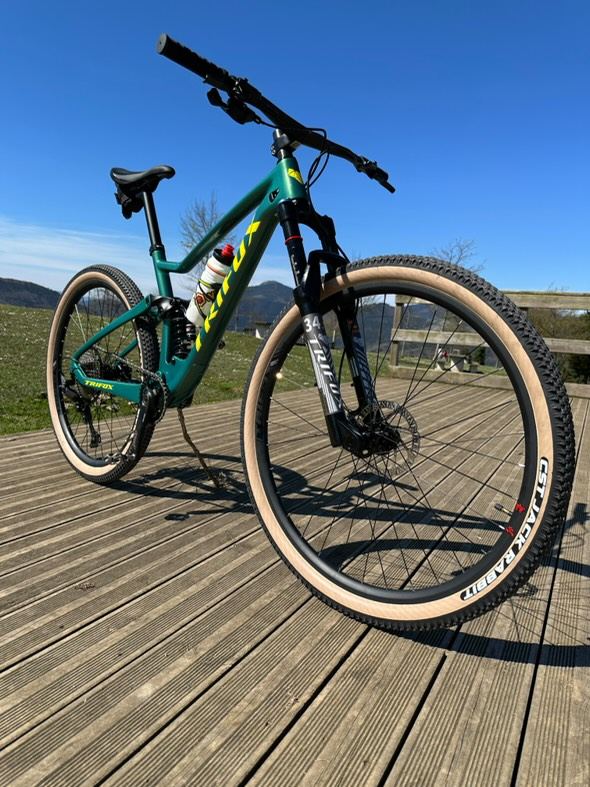
Upgrade if your trails, style, or ambition demand more. TrifoxBike’s full suspension range blends performance and value, ready to elevate your ride.
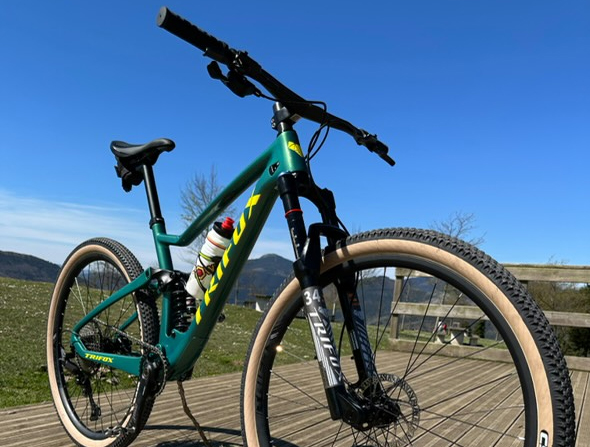
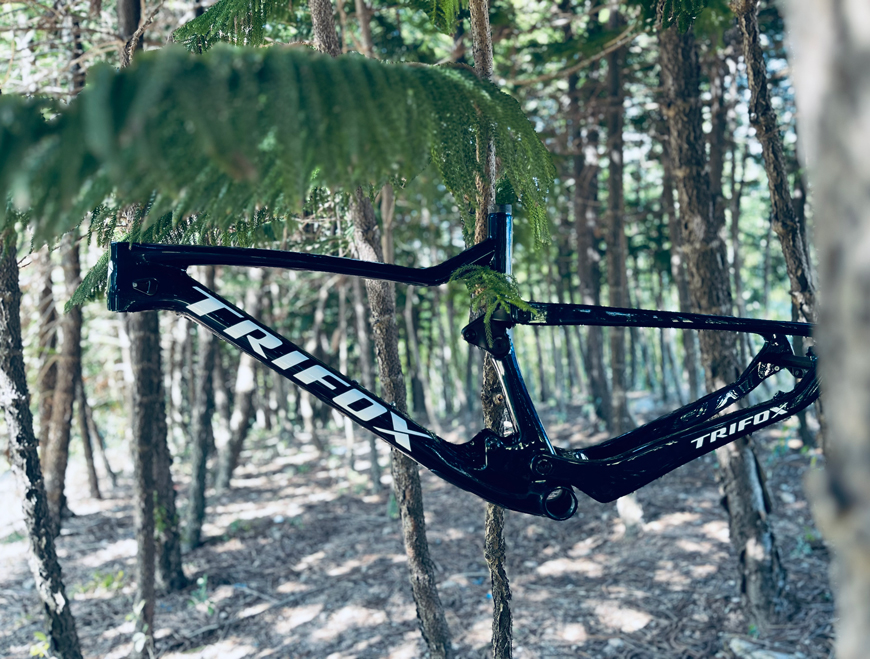
The age-old debate between hardtail (front suspension only) and full-suspension mountain bikes boils down to one question: What kind of rider are you? Let’s dissect the pros, cons, and ideal use cases for both setups to help you decide—and explore how brands like Trifox cater to diverse preferences.
Hardtail (Without Rear Suspension)
Pros:
- Lightweight: Fewer parts mean easier climbing and faster acceleration.
- Lower Cost: Affordable to buy and maintain (no rear shock or pivot bearings).
- Efficiency: Direct power transfer makes pedaling feel responsive, ideal for smooth trails or XC racing.
- Simplicity: Less maintenance and easier DIY repairs.
Cons:
- Rough Ride: Rear impacts are absorbed solely by your legs, leading to fatigue on technical terrain.
- Traction Limits: Less control on loose or rocky descents.
Full-Suspension
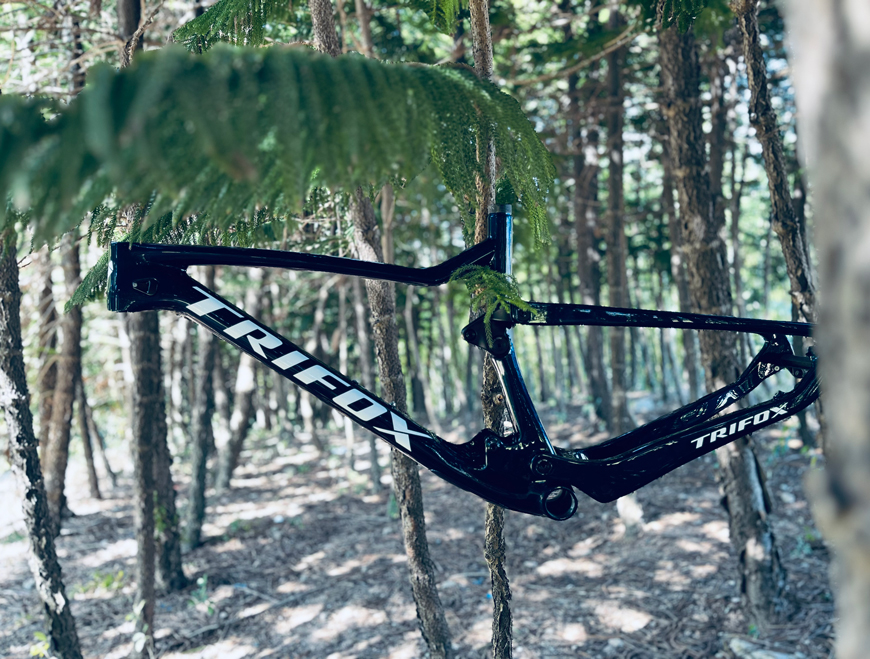
Pros:
- Comfort & Control: Rear shocks smooth out bumps, reducing fatigue and improving grip on chunky trails.
- Versatility: Confidently tackle downhill, enduro, or all-day adventures.
- Speed: Maintain momentum through rough sections.
Cons:
- Weight & Cost: Heavier frame and higher upfront/maintenance costs.
- Complexity: More moving parts mean more potential for mechanical issues.
Who Should Ride What?
- Choose a Hardtail If: You prioritize budget-friendly efficiency, ride smoother trails, or love climbing. Models like Trifox’s hardtails excel here, blending lightweight frames with trail-ready geometry.
- Choose Full-Suspension If: You crave technical descents, endurance rides, or park laps. Trifox’s full-suspension bikes offer balanced travel and durability for aggressive terrain.
Key Considerations
1. Terrain: Rocks, roots, and drops? Full-suspension shines. Pavement or flow trails? Save weight with a hardtail.
2. Budget: Hardtails cost less upfront and long-term.
3. Skill Level: Beginners may appreciate a hardtail’s simplicity; advanced riders often leverage full-squish capabilities.
There's no “better” option—only what's better for you. Hardtails reward efficiency and simplicity, while full-suspension bikes unlock technical prowess and comfort. Test both if possible, and consider Trifox’s range to match your riding style. Whether you're chasing KOMs or sending drops, the right suspension setup ensures every ride feels like freedom.
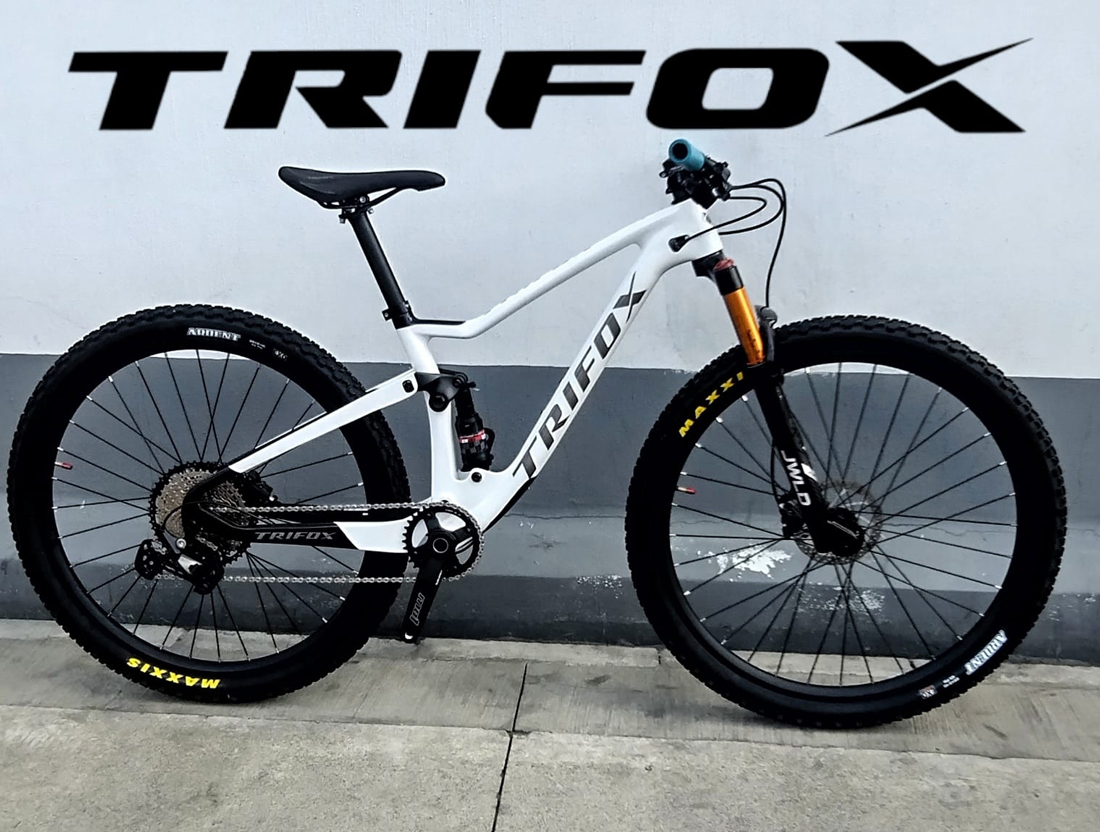
A full-suspension mountain bike is a significant investment, and riders often wonder: How long will it last? While there’s no one-size-fits-all answer, factors like usage, maintenance, and component quality play key roles. Let’s dive into durability expectations and how to maximize your bike’s lifespan—with a nod to robust options like Trifox’s full-suspension models.
Lifespan Factors
1. Frame Construction: High-quality aluminum or carbon frames (like Trifox’s) can last 5–10+ years with proper care. Stress cracks or impact damage are rare but possible in extreme conditions.
2. Suspension Components: Rear shocks and fork seals require regular servicing (annually or every 100–200 ride hours). Neglect can lead to leaks or degraded performance in 2–4 years.
3. Drivetrain & Bearings: Chains, cassettes, and pivot bearings wear fastest. Replace chains every 500–1,000 miles and pivot bearings every 1–2 years, depending on riding intensity.
4. Wheels: Rims and hubs endure constant abuse. Quality wheelsets last 3–5 years, but hard impacts or poor maintenance can shorten this.
Maintenance Matters Most
Regular cleaning, lubrication, and timely part replacements are critical. For example:
- Clean suspension stanchions after muddy rides to prevent seal damage.
- Grease pivot bolts and bearings annually to combat corrosion.
- Check torque specs on frame bolts to avoid stress fractures.
Signs It's Time to Retire Your Bike
- Frame Damage: Cracks, dents, or creaking noises signal structural failure.
- Irreparable Suspension: If rebuild kits can’t fix a soggy shock or fork, replacement is cheaper than constant repairs.
- Outdated Standards: Older bikes may lack compatibility with modern components (e.g., thru-axles, 1x drivetrains), making upgrades impractical.
Trifox Full-Suspension Bikes: Built to Endure
Models like those from Trifox prioritize durability with premium carbon frames, reliable suspension linkages, and modern geometry. Their designs balance lightweight performance with trail-tough resilience, ensuring longevity for riders who maintain their bikes diligently.
Maximizing Your Bike's Life
- Ride Within Limits: Avoid overly aggressive terrain if your bike isn’t built for it.
- Store Indoors: Protect against rust and UV damage.
- Upgrade Strategically: Swap worn parts before they compromise other components.
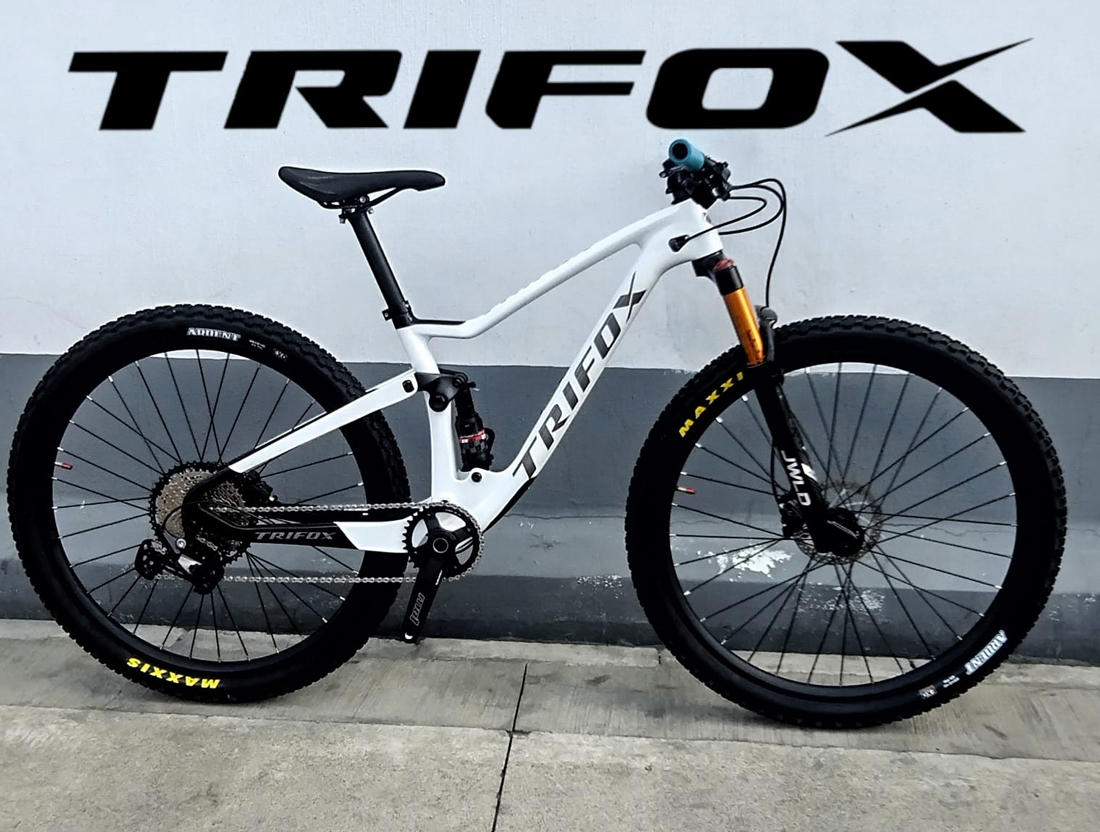
A well-maintained full-suspension bike can last a decade or more, but its “usable life” depends on how hard you ride and how proactively you care for it. Brands like Trifox offer frames engineered to endure, making them a smart choice for riders seeking longevity.
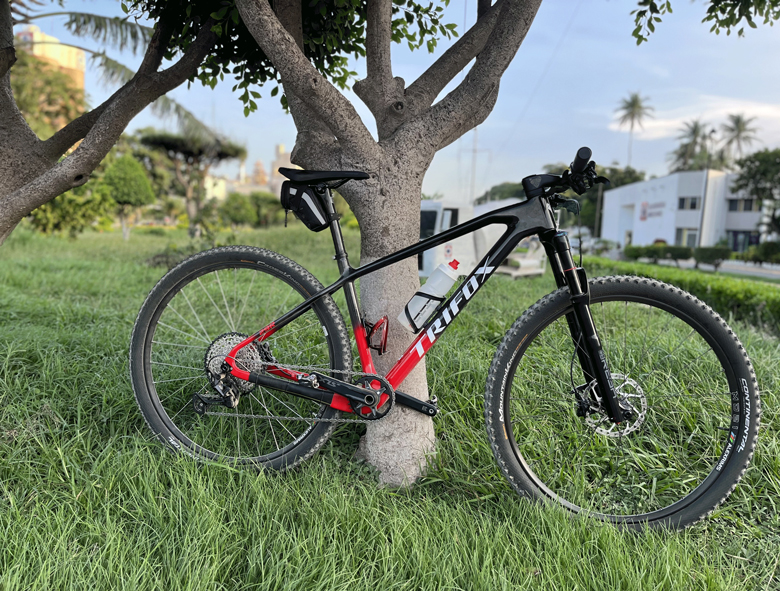
Mountain biking technology constantly evolves, and one debate among riders is whether to choose a frame with full internal cable routing.
What Is Full Internal Cable Routing?
Trifox hides brake and derailleur cables (or housing) inside the frame, creating a clean, streamlined appearance. Unlike traditional setups where cables run externally, Trifox routes them through the frame’s tubes, often exiting near components like the stem or rear derailleur.
Pros of Trifox
Aesthetics & Aerodynamics: A clutter-free frame looks sleek and may reduce drag marginally, though this matters more for racers.
Protection: Cables are shielded from mud, rocks, and trail debris, reducing wear and corrosion.
Durability: Less exposure means fewer snags on branches or accidental tugs during technical rides.
The Trifox SDY21 Frame: A Case Study
The Trifox SDY21 exemplifies Trifox done right. This lightweight carbon hardtail pairs Boost spacing stiffness with internal routing that’s thoughtfully designed. The cables enter through the headtube, minimizing friction points, and the carbon construction ensures durability without weight penalties. For riders prioritizing a clean build, it’s a compelling option.
Who Should Consider Trifox?
Weight-Weenies & Racers: The SDY21's minimalistic design shaves grams while maintaining performance.
Low-Maintenance Riders: If you prefer professional tune-ups and value long-term cable health, Trifox suits you.
Aesthetic Enthusiasts: Love a bike that looks as sharp as it rides? Internal routing delivers.
Who Should Skip It?
DIY Mechanics: If you love tweaking your bike trailside, external routing offers easier access.
Budget-Conscious Riders: Trifox frames often cost more, and installation might require extra tools.
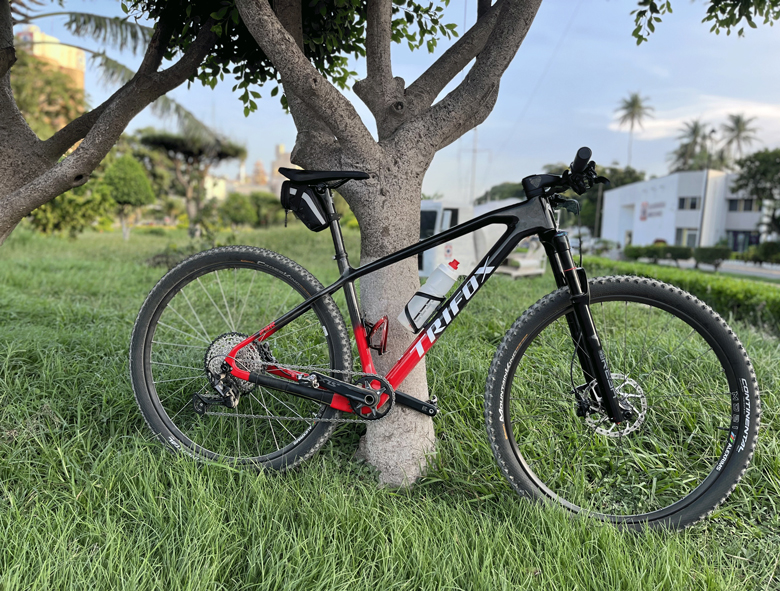
Full internal cable routing isn't a must-have, but it’s a worthy upgrade for riders valuing aesthetics, protection, and modern design. The Trifox SDY21 frame balances these perks with practical engineering, making it ideal for those ready to embrace Trifox’s trade-offs. Before deciding, weigh your maintenance habits, budget, and riding style—because the best frame is the one that matches your trail needs.
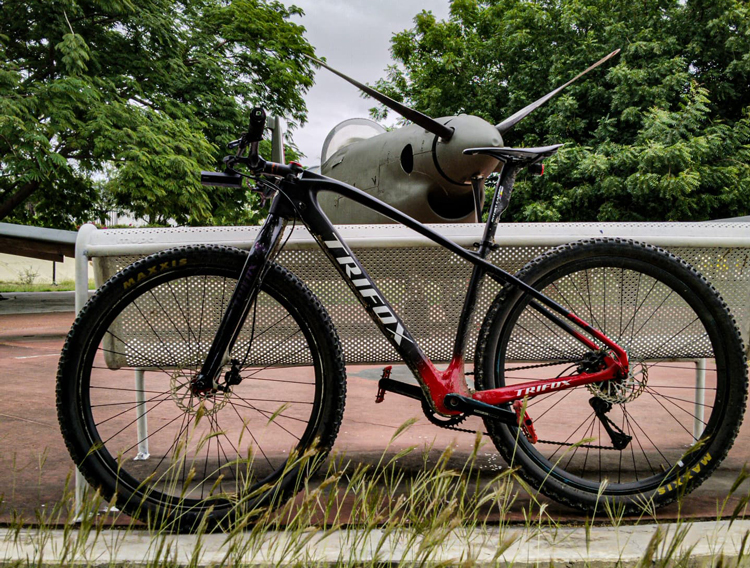
If you're in the market for a mountain bike frame upgrade, timing your purchase can make a huge difference—both for your performance and your wallet. With seasonal promotions rolling out and brands like Trifox Bike offering deals on high-quality carbon mountain bike frames, you might be wondering: Is now the best time to buy? Let’s break it down.
Why Carbon Frames?
Carbon fiber frames have become the gold standard for serious riders, combining lightweight construction with unmatched durability and vibration dampening. Whether you’re tackling rocky trails or aiming for speed on technical climbs, a carbon frame like those from Trifox Bike offers the stiffness and responsiveness needed to elevate your ride.
Seasonal Promotions & Savings
Retailers often slash prices during off-peak seasons or ahead of new model releases. Summer and fall are prime times for discounts as brands clear inventory. Right now, Trifox Bike is running promotions on their carbon mountain bike frames, making it an ideal moment to snag a premium frame at a fraction of the cost. These deals rarely last, so acting fast could save you hundreds.
Future-Proof Your Ride
Investing in a high-quality frame now ensures compatibility with the latest components, from drivetrains to dropper posts. Carbon frames are also built to last, meaning you won’t need to upgrade again anytime soon. With advancements in manufacturing, today’s frames are lighter and stronger than ever—features worth capitalizing on during a promotion.
What to Consider Before Buying
Budget: While promotions help, ensure the frame aligns with your long-term goals.
Urgency: If your current frame is holding you back, waiting might cost you more in repairs or missed rides.
Specs: Match the frame’s geometry and features (like boost spacing or suspension compatibility) to your riding style.
If you've been eyeing a carbon mountain bike frame, now is absolutely the time to buy. With Trifox Bike’s current promotion, you get top-tier engineering at a discounted price—a rare combination of value and performance. Don’t miss out; check out their lineup here and hit the trails with confidence!

Mountain biking is an exhilarating sport, but the right bike can make the difference between a thrilling adventure and a bone-jarring ordeal. In a recent video by MTB enthusiasts Andoni Arriaga, the team dives deep into the world of full-suspension mountain bikes and assembles a full-suspension bike, explaining why they’re a game-changer for riders tackling rough terrain.
Paired with insights from the video, we're spotlighting the Trifox Full-Suspension Mountain Bike—a standout model that embodies the benefits discussed. Whether you're a seasoned rider or a trail newbie, here’s why full-suspension bikes deserve your attention (and why Trifox’s offering might be your next ride).
Why Full-Suspension Bikes Shine?
1. Superior Control on Technical Terrain
Full-suspension systems absorb impacts from roots, rocks, and drops, keeping your tires glued to the ground. This translates to better handling and confidence when navigating steep descents or tight corners.
Rear suspension minimizes vibrations transferred to your body, letting you ride longer without hand, arm, or back fatigue. As the hosts joke, “Your muscles will thank you—and so will your post-ride beer.”
3. Enhanced Traction for Climbing
Unlike hardtails, full-suspension bikes maintain tire contact during climbs, preventing spinouts on loose gravel or muddy ascents.
4. Versatility Across Trail Types
From cross-country loops to downhill parks, full-suspension bikes adapt to diverse conditions. The video emphasizes that modern designs balance efficiency and plushness, debunking the myth that they’re “too slow” for flat trails.
Why the Trifox Full-Suspension Bike Stands Out?
- Carbon Fiber Performance: At $ 1599 of the Trifox PIONEER , without skimping on carbon quality.
- Customization Options: Choose your drivetrain (SHIMANO SL-M6100-R 12speeds ; SHIMANO RD-M6100-SGS 12speeds) and suspension setup to match local trails.
- Climbing Efficiency: The proprietary suspension design minimizes pedal bob, ensuring power transfer isn't wasted—a feature the video notes as critical for uphill sections.
Who Should Ride the Trifox PIONEER?
1. Aggressive Trail Riders: Tackle black diamonds and rock gardens with confidence.
2. Endurance Enthusiasts: Ride longer, thanks to reduced fatigue.
3. Tech-Terrain Explorers: The 29” wheels and plush suspension eat up roots and drops.
As the Andoni Arriaga video proves, full-suspension bikes are no longer niche—they’re essential for modern trail riding. The Trifox Full-Suspension Mountain Bike embodies the advancements discussed, offering premium specs at a mid-tier price. Whether you’re upgrading from a hardtail or seeking a do-it-all rig, this bike deserves a spot on your radar.
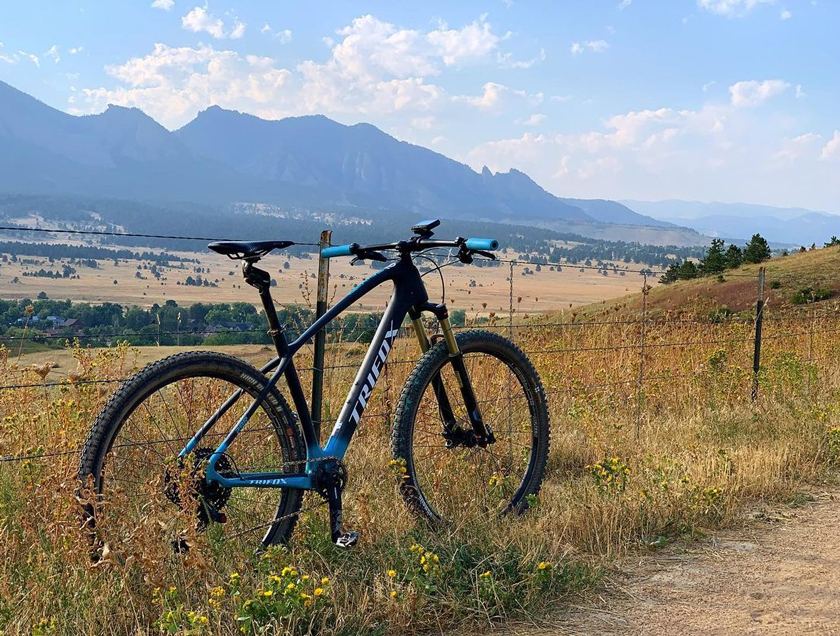
Mountain biking thrives on precision, performance, and the right gear—and nothing elevates your ride like a carbon hardtail 29er frame. Combining cutting-edge materials with smart design, this setup redefines trail agility and efficiency. Enter the Trifox MFM200, a standout example of how carbon technology and 29er geometry can transform your off-road adventures.
The Carbon Advantage
Carbon fiber's magic lies in its strength-to-weight ratio. The MFM200 frame weighs just 1,200 grams, offering featherlight handling without sacrificing durability. Carbon’s natural vibration-damping properties absorb trail chatter, reducing fatigue on long rides and keeping you in control over rough terrain. Unlike aluminum, it resists corrosion and flex, translating to sharper power transfer and a smoother ride.
Hardtail Efficiency
By ditching rear suspension, hardtails like the MFM200 eliminate weight and complexity. This design shines on climbs and fast-flowing trails, where every pedal stroke counts. Maintenance costs drop, and the direct connection to the trail enhances responsiveness—ideal for riders who prioritize speed and precision over plush suspension.
29er Wheels: Trail Domination
The 29-inch wheels on the MFM20 are a game-changer. Their larger diameter rolls over roots and rocks effortlessly, maintaining momentum and boosting confidence on technical descents. Paired with the frame's optimized geometry—a 67° head tube angle and 435mm chainstays—you get a balanced ride that’s stable at speed yet nimble enough for tight corners.
Trifox MFM200 Highlights
-Boost Hub Compatibility: The 148x12mm rear spacing ensures stiffness and compatibility with modern drivetrains.
-Internal Cable Routing: Clean lines and protected components for all-weather reliability.
-Versatile Build Options: Compatible with 100–120mm suspension forks and 1x/2x drivetrains, letting you tailor the bike to your style.
-XC-Ready Geometry: Aggressive yet comfortable positioning for long days on the trail.
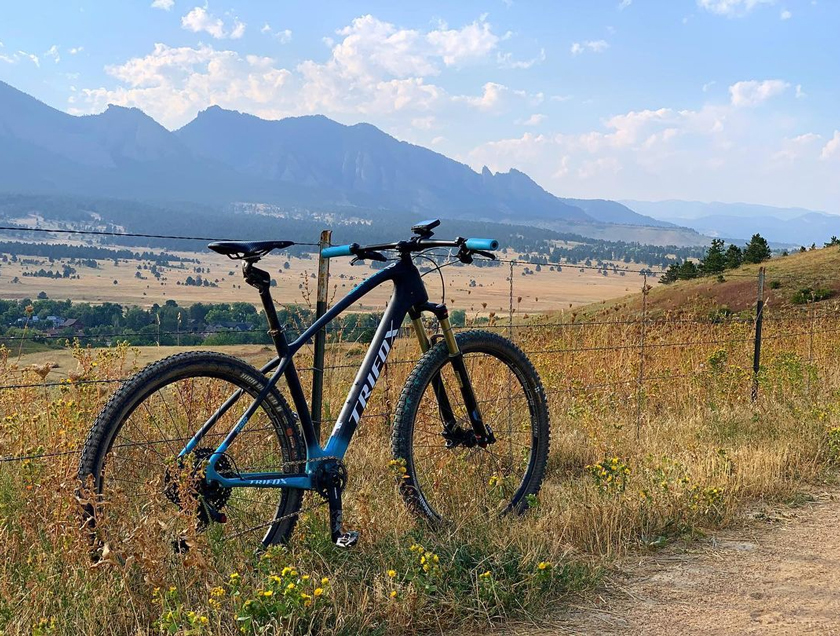
The MFM200 suits cross-country racers, endurance riders, and trail enthusiasts seeking a lightweight, efficient rig. It’s perfect for DIY builders wanting a premium carbon base without the off-the-shelf price tag. Pair it with mid-range components, and you’ll have a bike that rivals high-end models at a fraction of the cost.
The Trifox MFM200 carbon hardtail 29er frame isn’t just an upgrade—it’s a revolution. By blending lightweight performance, rugged versatility, and smart design, it unlocks new levels of speed and control. Whether you’re chasing podium finishes or weekend epics, this frame ensures every ride feels like a breakthrough.
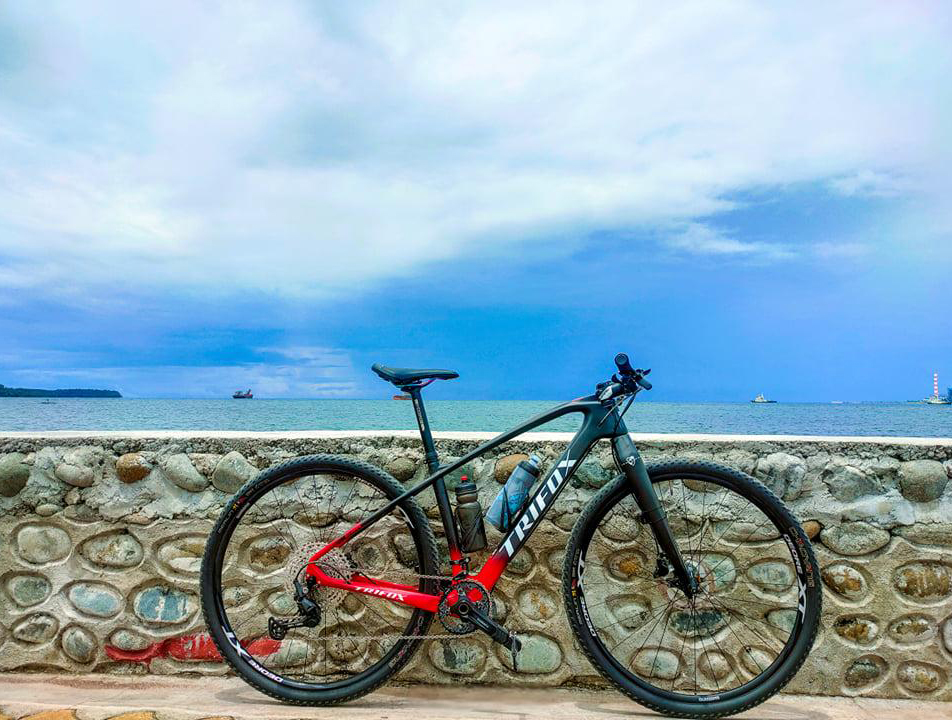
When it comes to cross-country (XC) mountain biking, every gram matters. The quest for speed, efficiency, and control on rugged trails has led to the rise of carbon XC hardtail frames, the ultimate weapon for riders looking to dominate the competition. These frames are not just lightweight; they are precision-engineered machines designed to deliver unmatched performance on demanding terrain. If you're serious about XC racing or simply want to elevate your trail experience, a carbon hardtail frame is a game-changer.
Why Carbon? The Science Behind the Speed
Carbon fiber has become the gold standard for high-performance bike frames, and for good reason. Its unique properties—lightweight, stiff, and incredibly strong—make it the ideal material for XC hardtails. Unlike aluminum or steel, carbon fiber can be molded into complex shapes, allowing engineers to optimize every inch of the frame for stiffness, compliance, and aerodynamics. This means you get a bike that accelerates faster, climbs more efficiently, and handles technical descents with confidence.
The lightweight nature of carbon XC frames is a major advantage. Weighing in at just over 1,000 grams for some models, these frames shave precious seconds off your lap times. Less weight means less effort to pedal uphill and more agility on tight, twisty trails. But don’t let the lightness fool you—carbon frames are incredibly durable, designed to withstand the rigors of XC racing and aggressive trail riding.
Trail Domination: Performance You Can Feel
The beauty of a carbon XC hardtail lies in its simplicity. Without the added complexity of rear suspension, these bikes are direct power transfer machines. Every ounce of energy you put into the pedals goes straight to the trail, making them incredibly efficient on climbs and flat sections. The stiffness of the carbon frame ensures minimal flex, so you can sprint out of corners and power over obstacles with precision.
But it’s not just about raw speed. Modern carbon hardtails are designed with trail performance in mind. Features like tapered head tubes, thru-axles, and aggressive geometry provide stability and control on technical descents. Pair that with a lightweight carbon fork, and you’ve got a bike that’s as capable on rocky, root-filled trails as it is on smooth singletrack.
Trifox Bike: Your Gateway to Carbon Excellence
If you’re ready to experience the thrill of a carbon XC hardtail, look no further than Trifox Bike. Their range of carbon mountain bike frames, like the ones found at TrifoxBike.com, offers exceptional quality and performance at a competitive price. Whether you’re building your dream XC race bike or upgrading your current ride, Trifox frames deliver the perfect balance of weight, stiffness, and durability.
In conclusion, carbon XC hardtail frames are the ultimate choice for riders who demand speed, efficiency, and trail domination. With their lightweight construction, precision engineering, and unmatched performance, these frames are redefining what’s possible on the trail. So, if you’re ready to take your riding to the next level, it's time to go carbon. Your next personal best is waiting.
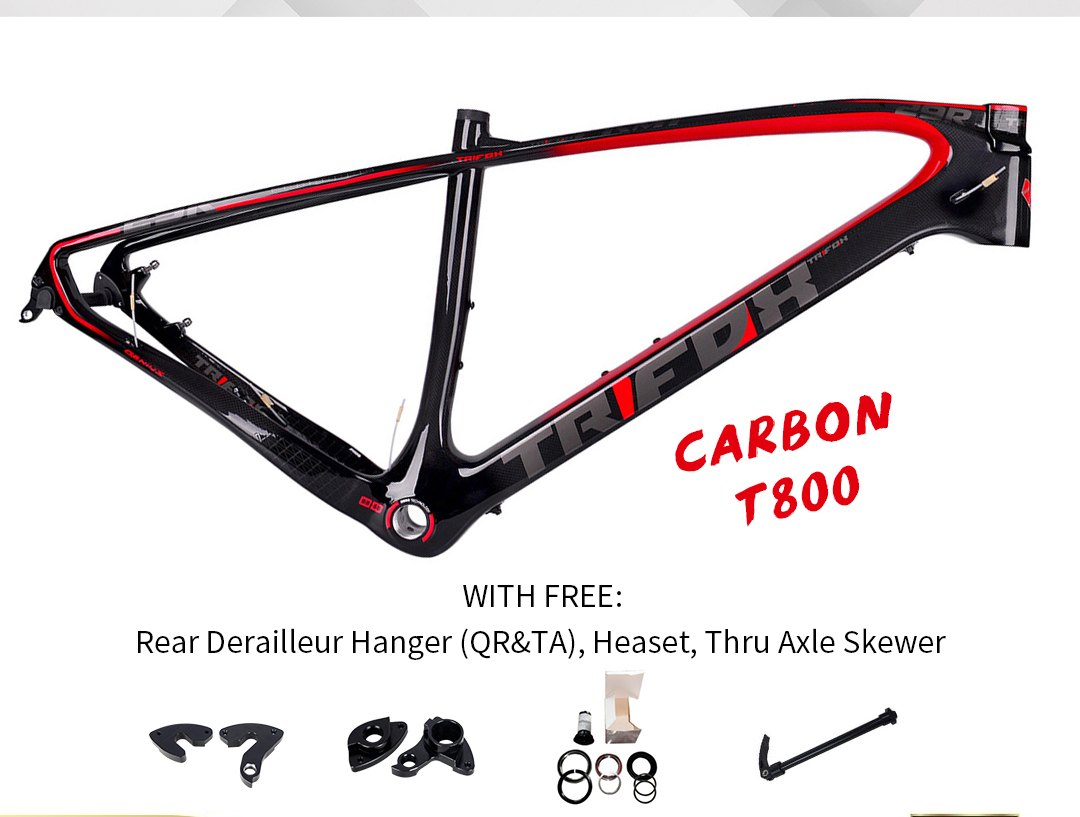
When it comes to mountain biking, the choice of bike can significantly impact your riding experience. Among the various options available, hardtail mountain bikes (MTBs) have carved out a unique niche. But what exactly are hardtail MTBs best for? Let’s dive into the world of hardtails and explore their strengths, ideal use cases, and why they might be the perfect choice for your next adventure.
What Is a Hardtail MTB?
A hardtail MTB is a type of mountain bike that features a front suspension fork but lacks rear suspension. This design makes it lighter, more efficient, and often more affordable than full-suspension bikes. The absence of rear suspension simplifies the bike’s construction, reducing maintenance and improving pedaling efficiency.
Best Uses for Hardtail MTBs
1. Cross-Country Riding
Hardtails excel in cross-country (XC) riding, where efficiency and speed are paramount. The rigid rear end ensures maximum power transfer from your pedals to the wheels, making it easier to climb hills and maintain momentum on flat trails. If you’re into long-distance rides or racing, a hardtail is a fantastic choice.
2. Climbing
Thanks to their lightweight design and efficient power transfer, hardtails are climbing machines. Without the added weight and energy loss of rear suspension, you can tackle steep ascents with less effort. This makes them ideal for riders who enjoy challenging climbs and technical uphill sections.
3. Smooth to Moderately Technical Trails
Hardtails perform exceptionally well on smooth or moderately technical trails. The front suspension absorbs bumps and obstacles, while the rigid rear end keeps the bike responsive and agile. If your local trails aren't overly rocky or root-filled, a hardtail will provide a fun and engaging ride.
4. Budget-Friendly Option
For riders on a budget, hardtails offer excellent value. They are generally more affordable than full-suspension bikes, both in terms of initial cost and maintenance. This makes them a great entry point for beginners or those looking to invest in a reliable bike without breaking the bank.
5. Versatility
Hardtails are incredibly versatile. They can handle a variety of terrains, from gravel paths to singletrack trails. Many riders also use hardtails for commuting or bikepacking, thanks to their efficiency and ability to accommodate racks and panniers.
6. Skill Development
Riding a hardtail can help you become a better mountain biker. The lack of rear suspension forces you to focus on line choice, balance, and technique. Over time, this can improve your overall riding skills, making you more confident and capable on any bike.
Why Choose a Carbon Hardtail?
If you're considering a hardtail, a carbon frame like those offered by Trifox Bike can take your riding to the next level. Carbon fiber is lightweight, strong, and provides excellent vibration damping, enhancing comfort and performance. A carbon hardtail combines the efficiency of a hardtail with the advanced technology of modern materials, making it a top choice for serious riders.
Conclusion
Hardtail MTBs are best for riders who value efficiency, simplicity, and versatility. Whether you’re tackling cross-country trails, climbing steep hills, or exploring new terrain, a hardtail can deliver an exhilarating and rewarding experience. And if you're looking for a high-performance option, a carbon hardtail from Trifox Bike is worth considering. So, if you're ready to hit the trails with a bike that’s both capable and fun, a hardtail might just be your perfect match. Happy riding!

























































